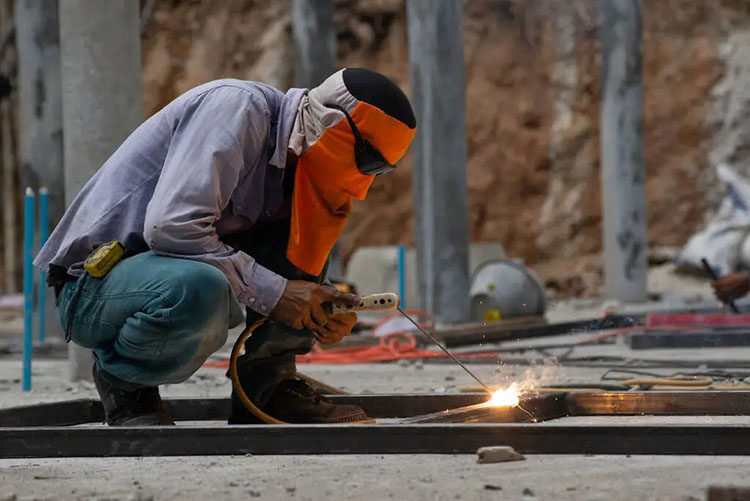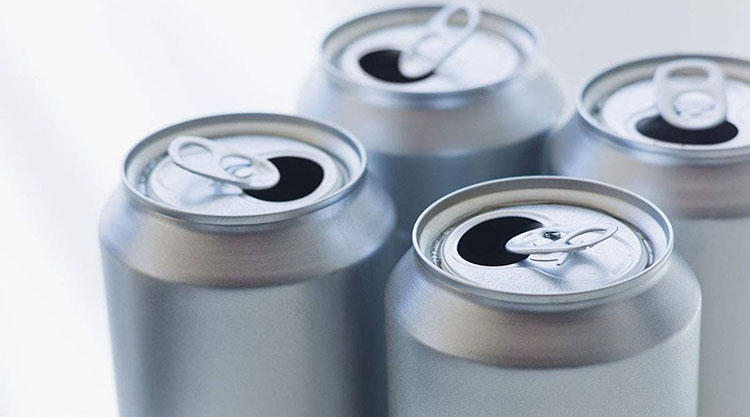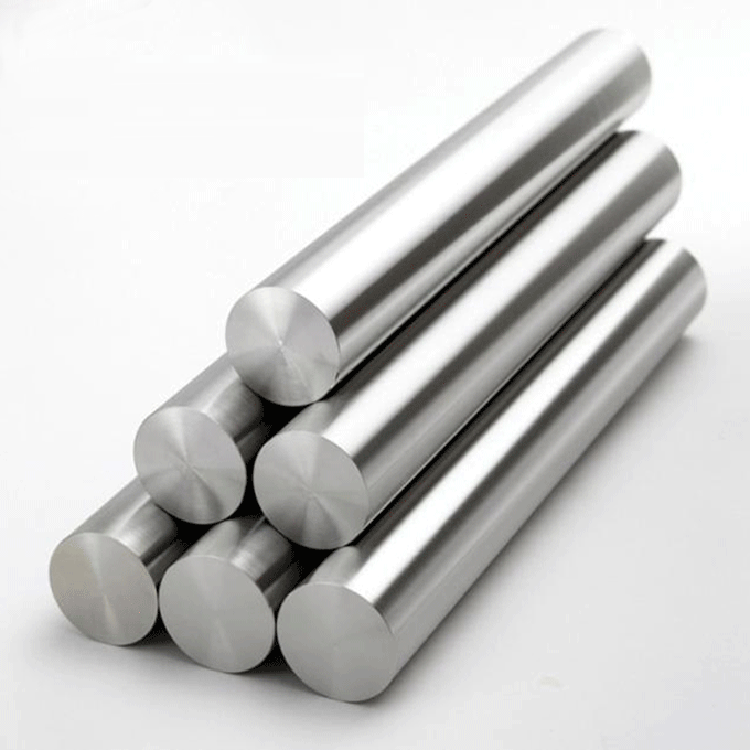1.How to weld mild steel?
Low carbon steel has low carbon content and good plasticity, and can be prepared into various forms of joints and components. In the welding process, it is not easy to produce hardened structure, and the tendency to produce cracks is also small. At the same time, it is not easy to produce pores. It is the best welding material.
Welding low carbon steel by gas welding, manual arc welding, submerged arc automatic welding, gas shielded welding and other methods can obtain good welded joints. Do not heat for a long time when using gas welding, otherwise the grains in the heat-affected zone will easily become larger. When the joint is very rigid and the ambient temperature is low, the workpiece should be preheated to 100~150°C to avoid cracks.
2.How to weld medium carbon steel?
Due to the high carbon content of medium carbon steel, the weld seam and its heat-affected zone are prone to hardened structures and cause cracks, so it should be preheated to about 300°C before welding, and slow cooling is required after welding. It can be welded by gas welding, manual arc welding and gas shielded welding. Welding materials should use AWS E7016, AWS E7015 and other electrodes with better crack resistance.
3.How to weld aluminum and aluminum alloy?
Aluminum and aluminum alloys are particularly prone to produce oxide films with large specificities and high melting points during welding. This oxide film can also absorb a large amount of water, so defects such as slag inclusions, poor fusion, and pores are prone to occur during welding. In addition, aluminum alloys Also prone to thermal cracks. Welding aluminum and aluminum alloys can be done by gas welding or manual arc welding. However, the heat of gas welding is not concentrated, and the heat transfer of aluminum is fast, so the production efficiency is low, and the deformation of the workpiece is large, so it is rarely used except for thin plates. At present, a large number of AC argon arc welding methods are used to weld aluminum and aluminum alloys, because it has concentrated heat, beautiful weld seams, small deformation, argon protection, and can prevent slag inclusions and pores. If manual arc welding is used to weld aluminum, it is suitable for thick plates above 4mm.
The grades of welding rods used are aluminum 109, aluminum 209 and aluminum 309. They are all salt-based electrodes with poor arc stability, requiring DC reverse power supply.
4.How to weld titanium and titanium alloys?
Titanium is a very active element. In liquid and solid state above 600°C, it is very easy to react with oxygen, nitrogen, hydrogen and other gases to form harmful impurities and embrittle titanium. Therefore, oxygen-acetylene gas welding, manual arc welding or other gas shielded welding cannot be used for titanium and titanium alloys, but only argon arc welding, vacuum electron beam welding and contact welding can be used.
Thin plates below 3mm are welded by argon arc welding, the power supply is directly connected with direct current, the purity of argon gas is not less than 99.98%, the nozzle should be as close as possible to the workpiece, the welding current should be small, and the welding speed should be fast. Improve crystal structure and eliminate welding stress.
5.How to weld copper and copper alloys?
The welding of copper and copper alloys has many difficulties, because their thermal conductivity is particularly good, so it is easy to cause defects such as impermeability and poor fusion. After welding, the workpiece will have a large deformation, and the weld and fusion zone are also prone to cracks and a large number of pores. The mechanical properties of the joint, especially the plasticity and toughness are lower than those of the base metal. Gas welding can be used to weld red copper, but the efficiency is too low, the deformation is large, and it needs to be preheated to above 400°C, and the working conditions are not good. Manual arc welding can use copper 107 or copper 227 electrodes, the power supply is reversed with DC, the arc is kept as low as possible, and the linear reciprocating strip method is used to improve the weld shape. Hammer the weld after welding to improve the quality of the weld. If argon tungsten arc welding is used, high-quality welded joints can be obtained and deformation of weldments can be reduced. Wire 201 is used for welding wire. If red copper wire T2 is used, flux 301 should also be used. The power supply adopts DC positive connection. The workpiece and welding wire should be carefully cleaned during welding to reduce pores and slag inclusions. High current and high speed should be used when welding.
Gas welding is commonly used for welding brass, and the welding wire can be wire 221, wire 222 or wire 224, etc. These wires contain silicon, tin, iron and other elements, which can reduce the burning loss of zinc in the molten pool. Due to the low gas welding temperature, the burning loss of zinc in brass can be reduced; a slight oxidation flame is used to cover the surface of the molten pool with a layer of zinc oxide film, which can reduce the evaporation of zinc. In addition, brass can also be welded by manual arc welding and argon tungsten arc welding.
6.What are the characteristics of ordinary low alloy steel welding?
Ordinary low-alloy steel is a commonly used alloy steel for reproduction. The main feature of this type of steel welding is that the heat-affected zone of the joint has a greater tendency to harden, and the hydrogen content will cause cold cracks in the joint. This tendency towards hardening and cold cracking increases as the strength grade of ordinary low alloy steel increases.
7.What is the welding method of 16 manganese steel?
16 Manganese steel welding should use junction 506 or junction 507 and other basic electrodes, DC reverse connection. When the structural crack tendency is not large, acid welding rods such as junction 502 or junction 503 can also be used, and the welding process is similar to that of low carbon steel; when the weldment is relatively rigid and the ambient temperature is lower than -10°C, heating before welding is required. Satisfactory results can be obtained by manual arc welding, submerged arc welding or electroslag welding.
8.What is the welding method of No. 15 manganese vanadium and No. 15 manganese titanium steel?
Both 15 manganese vanadium and 15 manganese titanium belong to 40 kg ordinary low alloy steel. Due to the addition of some vanadium or titanium, the strength level of the steel is improved; but their weldability, welding materials and welding processes are similar to those of 16 manganese steel. The comparison is similar. When submerged arc automatic welding is used, the welding wire can be 08 manganese high, 08 manganese 2 silicon, and flux 431, flux 350 or flux 250 can achieve satisfactory results.
9.What is the welding method of No. 18 manganese molybdenum niobium steel?
No. 18 manganese-molybdenum-niobium steel belongs to 50 kg high-strength ordinary low-alloy steel, which is often used in the manufacture of important welding products such as high-pressure vessels and boiler drums. Due to its high strength and large hardening tendency, local heating measures should be taken during spot welding. Pay attention to drying the electrode and cleaning the groove to prevent cold cracks caused by hydrogen. Manual arc welding uses junction 607 and other electrodes; submerged arc automatic welding uses welding wire with high manganese 08 and molybdenum, and it can be welded with flux 250 or flux 350.
Post time: Jun-12-2023




